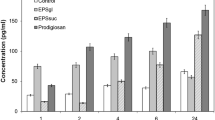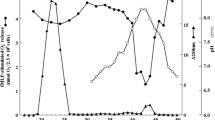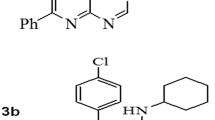Summary
Granulocytes (PMN) play an important role in antibacterial host defence. The modulation of PMN-function by different antibiotics has been shown previously. Therefore, we investigated the possible immuno-modulatory effects of four new quinolone antibiotics: ciprofloxacin, norfloxacin, pefloxacin, ofloxacin. Pure PMN-preparations were obtained from healthy volunteers and incubated for 30 min at 37° C with the different quinolones at different concentrations (0.1-1-5-10 mg/l). A complete PMN-functional profile was assayed. At all concentrations tested no significant differences were seen for myeloperoxydase content, superoxide production and chemiluminescence. A significant stimulation of phagocytosis and killing occurred at 10 mg/l of norfloxacin and at 10 mg/l of pefloxacin. An increase of chemotaxis towards formyl-methionyl-leucyl-phenylalanin was noted at 10 mg/l of ofloxacin, while stimulation of hexose monophosphate shunt was seen at 1 mg/l of ciprofloxacin and 10 mg/l of ofloxacin. The mechanism whereby both subinhibitory and inhibitory concentrations of quinolones moderately influence PMN-responsiveness is not yet known. Further studies are needed to elucidate the nature of this quinolone-effect and to assess its relevancein vivo.
Zusammenfassung
Granulozyten sind entscheidend an der antibakteriellen Abwehr beteiligt. Bereits in früheren Untersuchungen wurde gezeigt, daß verschiedene Antibiotika die Granulozytenfunktionen modulieren. Wir haben daher vier neue Chinolon-Antibiotika, Ciprofloxacin, Norfloxacin, Pefloxacin und Ofloxacin, im Hinblick auf mögliche immunmodulierende Eigenschaften untersucht. Reine Granulozytenpräparationen wurden von gesunden freiwilligen Probanden gewonnen. Sie wurden 30 Minuten lang bei 37° C mit verschiedenen Konzentrationen (0,1-1-5-10 mg/l) der genannten Chinolone inkubiert. Es wurde ein komplettes Granulozyten-Funktionsprofil erstellt. Bei den geprüften Konzentrationen waren keine signifikanten Veränderungen im Myeloperoxy-dasegehalt, der Superoxidbildung und Chemilumineszenz festzustellen. Bei der Inkubation mit 10 mg/l Norfloxacin und 10 mg/l Pefloxacin fand sich eine signifikante Stimulierung der Phagozytose und bakteriellen Abtötung. Bei einer Konzentration von 10 mg/l Ofloxacin war eine Zunahme der Chemotaxis gegenüber Formyl-methionyl-leucyl-phenylalanin festzustellen. Bei Inkubation mit 1 mg/l Ciprofloxacin und 10 mg/l Ofloxacin wurde eine Stimulation des Hexose-Monophosphat-Shunts beobachtet. Der Wirkungsmechanismus dieser mäßig ausgeprägten Veränderungen der Granulozyten-Reaktivität unter dem Einfluß von subinhibitorischen und inhibitorischen Konzentrationen von Chinolonen ist noch unbekannt. Für die Charakterisierung dieses Chinoloneffektes und die Beurteilung seinerIn-vivo-Relevanz sind weitere Untersuchungen nötig.
Similar content being viewed by others
Literature
Horne, D., Tomasz, A.: 20th Interscience Conference Antimicrobial Agents Chemotherapy, New Orleans 1980, abstract no 585.
Gemmell, C. G., Abdul-Amir, M. E. Antibiotic induced changes in streptococci with respect to their interactions with human polymorphonuclear leucocytes. Current Chemother. Infect. Dis. 2 (1980) 810–811.
Root, R. K., Metcalf, M. A.: Surface binding and enhanced killing of penicillin treatedStaphylococcus aureus 502A by human neutrophils: mechanism of the effect. J. Clin. Invest. 27 (1979) 480 A.
Lorian, V. Effects of subminimum inhibitory concentrations of antibiotics on bacteria. In: Antibiotics in laboratory medicine. Williams & Wilkins, Baltimore 1980, chapter 12.
Lehrer, R. L. Inhibition by sulfonamides of the candidacidal activity by human neutrophils. J. Clin. Invest. 50 (1971) 2498–2505.
Lehrer, R. L. Effects of colchicin and chloramphenicol on the oxidative metabolism and phagocytic activity of human neutrophils. J. Infect. Dis. 127 (1973) 40–48.
Kaplan, S. S., Perillie, P. E., Finch, S. C. The effect of chloramphenicol on human leucocyte phagocytosis and respiration. Proc. Soc. Exp. Biol. Med. 130 (1969) 839–843.
Ferrari, F. A., Pagani, A., Marconi M., Stefanoni, R., Siccardi, A. Inhibition of candidacidal activity of human neutrophil leucocytes by aminoglycoside antibotics. Antimicrob. Agents Chemother. 17 (1980) 87–88.
Forsgren, A., Schmelling, D., Quie, P. G. Effect of tetracycline on the phagocytic function of human leucocytes. J. Infect. Dis. 130 (1974) 412–415.
Bjorkstein, B., Ray, C., Quie, P. G. Inhibition of human neutrophil chemotaxis and chemiluminescence by amphotericin B. Infect. Immun. 14 (1976) 315–317.
Boogaerts, M. A., Verstappen, A. A., Verwilghen, R. L.: Clavulanic acid enhancesin vitro phagocytic activity of normal and preleukemic granulocytes. Proc. Int. Soc. Hematology 1984, p. 455.
Boogaerts, M. A., Malbrain, S., Verwilghen, R. L. Influence of clindamycin and metronidazole on granulocyte functionin vitro. Blood 65 (1985) 305.
Boogaerts, M. A., Vercelotti, G., Malbrain, S., Verwilghen, R. L., Jacob, H. S.: Platelets augment granulocyte mediated cytotoxicity: uncovering of their effects by improved cell separation techniques. Scand. J. Haematol. (in print).
Fehr, J., Jacob, H. S. In vitro granulocyte adherence andin vivo margination, two associated complement dependent functions. J. Exp. Med. 146 (1977) 641–646.
Goldstein, I. M., Roos, D., Kaplan, H. B., Weisman, G. Complement and immunoglobulin stimulate superoxide production by human leucocytes independently of phagocytosis. J. Clin. Invest. 56 (1975) 1155–1162.
Nelson, R. D., Herron, M. J., Schmidtke, R., Simmons, L. Chemiluminescence response of human leucocytes: influence of medium components on light production. Infect. Immun. 17 (1977) 513–520.
Chatelet, L. R., Wang, P., McCall, C. E. Hexose monophosphate shunt activity and oxygen consumption during phagocytosis. Proc. Soc. Exp. Med. 140 (1972) 1434–1442.
Nelson, R. D., Quie, P. G., Simmons, R. L. Chemotaxis under agarose: a new and simple method for measuring chemotaxis and spontaneous migration of human polymorphonuclear leucocytes and monocytes. J. Immunol. 115 (1975) 1650–1656.
Tan, J. S., Watanakuwakorn, C., Phair, J. P. A modified assay of neutrophil function: use of lysostaphin to differentiate defective phagocytosis from impaired intracellular killing. J. Lab. Clin. Med. 78 (1971) 316–322.
Author information
Authors and Affiliations
Rights and permissions
About this article
Cite this article
Boogaerts, M.A., Malbrain, S., Scheers, W. et al. Effects of quinolones on granulocyte function in vitro. Infection 14 (Suppl 4), S258–S262 (1986). https://doi.org/10.1007/BF01661288
Issue Date:
DOI: https://doi.org/10.1007/BF01661288




